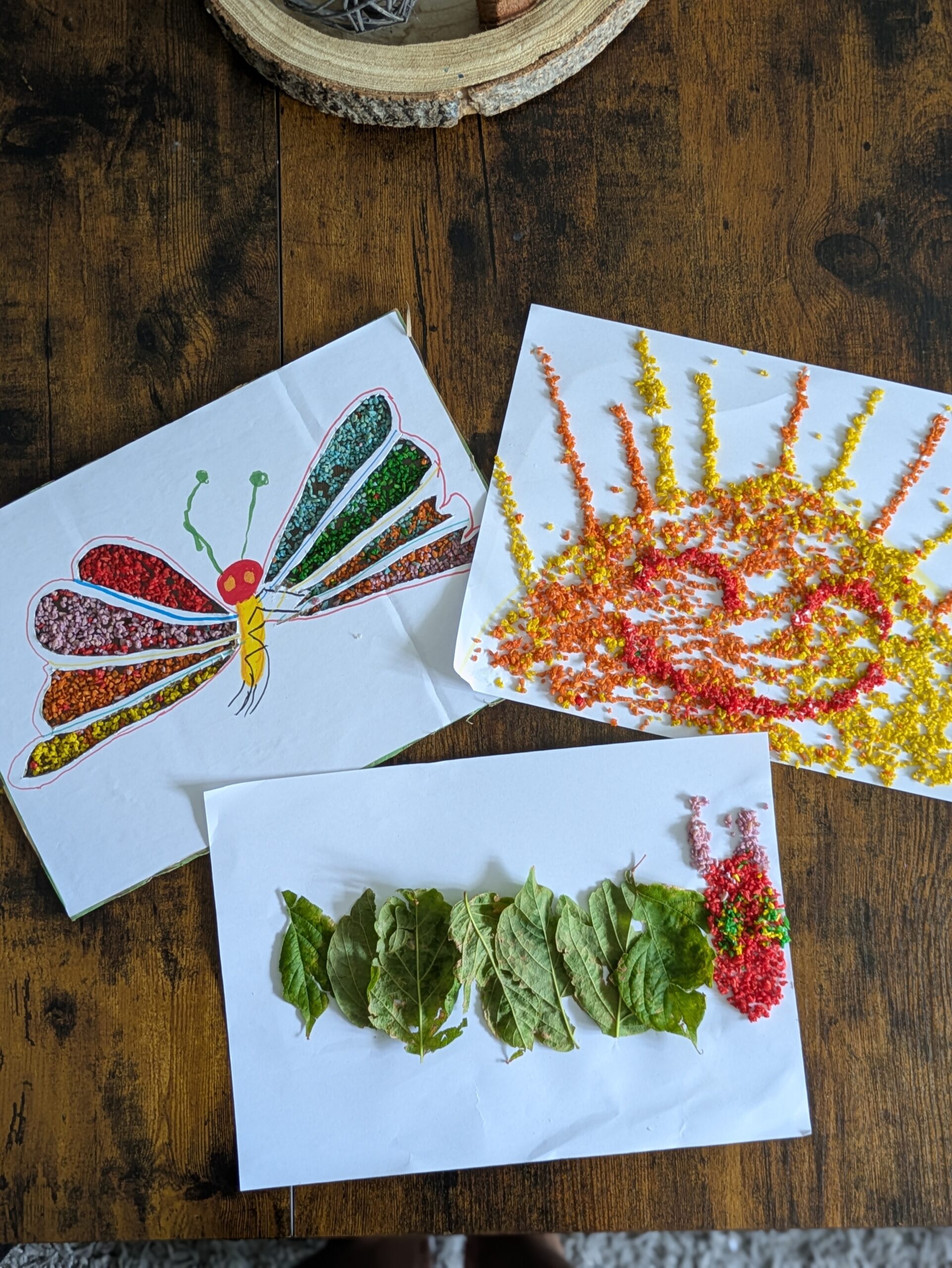Easy Crafts for The Very Hungry Caterpillar Book
I was looking for another low-mess, screen-free way to bring one of my three year old’s favourite book “The Very Hungry Caterpillar” by Eric Carle, to life, then I thought crafting it would be a nice idea. This book isn’t just a classic, it’s amazing for hands-on learning too. And, when preschoolers can see, feel, and make parts of a story, they connect with it in a whole new way, Just like our Butterfly Craft Round-Up.
In this post, I’ll show three easy Hungry Caterpillar-inspired crafts I did with my preschoolers using simple supplies like dyed bulgur, glue, and leaves. Perfect for all my not-so-crafty mamas looking for activities that are fun but low-prep, and doable at home.
Why Craft with Books?
In case you’re wondering why you should craft with books, here are five reasons why it’s an amazing idea, all based on my own experience with my kids:
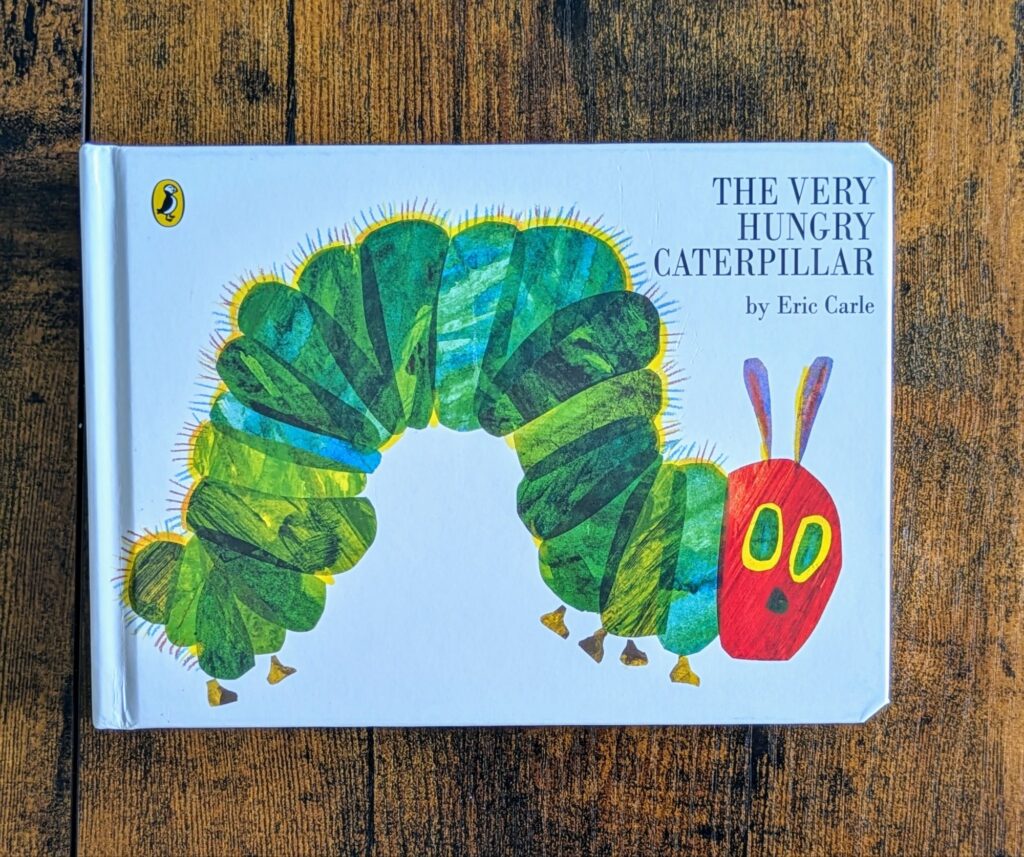

- It reinforces early literacy skills: This means that it helps kids retell the story, build vocabulary, and make connections through hands-on play.
- It makes stories more engaging and memorable: If your child hasn’t been loving story time, adding a simple craft can help bring the book to life and make them actually look forward to it.
- It builds fine motor skills: Picking up grains strengthens their pincer grip and shows them how everyday materials can turn into meaningful, creative moments.
Here’s our “Very Hungry Caterpillar” craft lineup. We created:
1. A sun to start the story
2. A beautiful butterfly with bulgur-filled wings
3. A caterpillar made from real leaves
Craft 1: Dyed Bulgur Sun
“In the light of the moon, a little egg lay on a leaf… Then came the sun.”
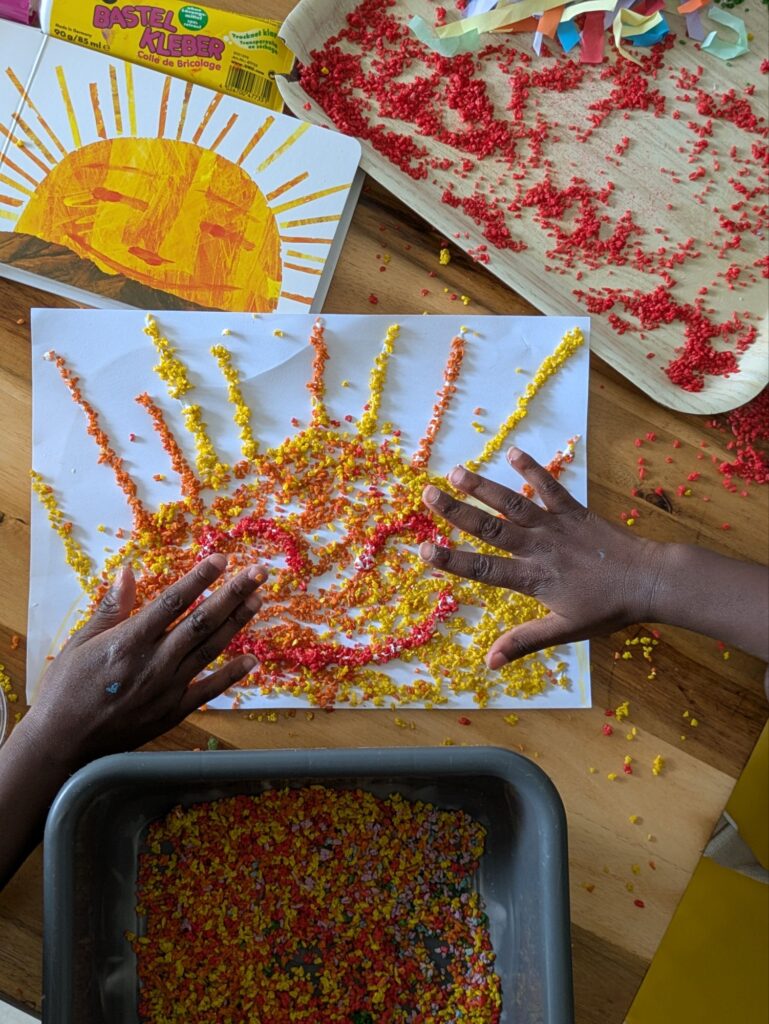
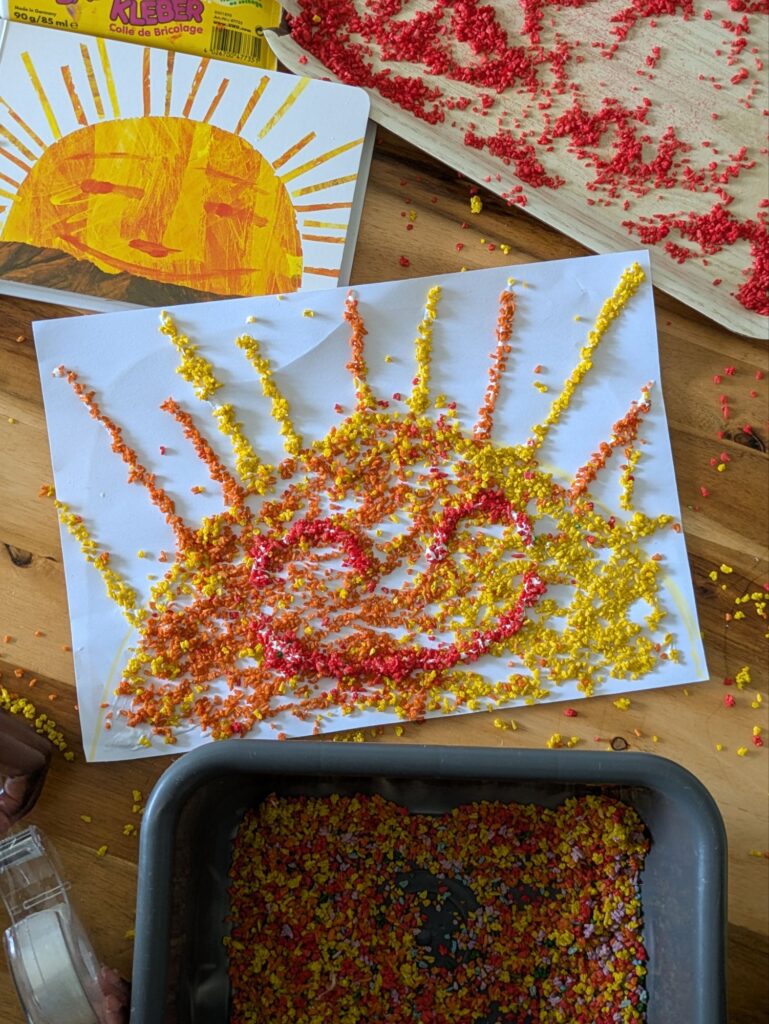
Supplies:
- Dyed bulgur (we used yellow, orange, and red)
- Glue
- White cardstock
- Marker for sketching the sun
How to Make It:
1. Draw a sun shape on white paper, just a half circle with simple rays is perfect (we mimicked the one in the book).
2. Let your child fill in the design with glue, then sprinkle the dyed bulgur on top, covering the glued sections, then shake off the excess.
Why It’s Great:
It’s a tactile craft and is so satisfying to make and touches on the book’s opening page. It’s also a great fine motor activity, especially when preschoolers use their fingers to pinch and sprinkle the grains. See how we used coloured rice in this rainbow crafts round-up post.
Craft 2: Leaf Caterpillar
“He wasn’t hungry any more and he wasn’t a little caterpillar any more.”
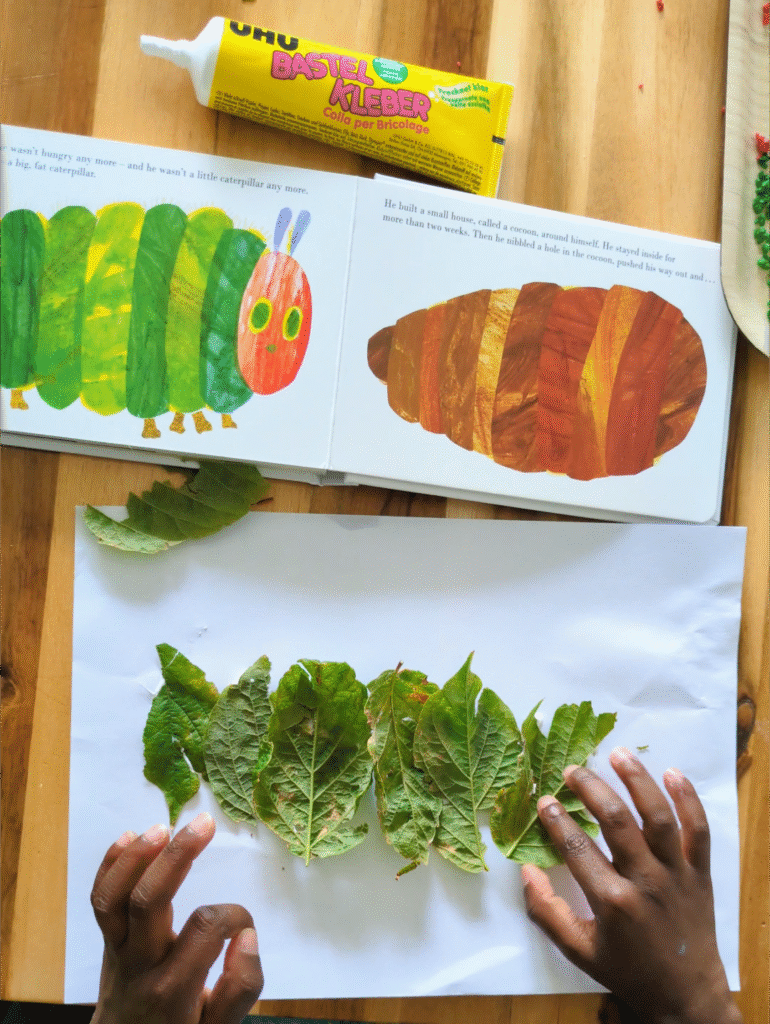
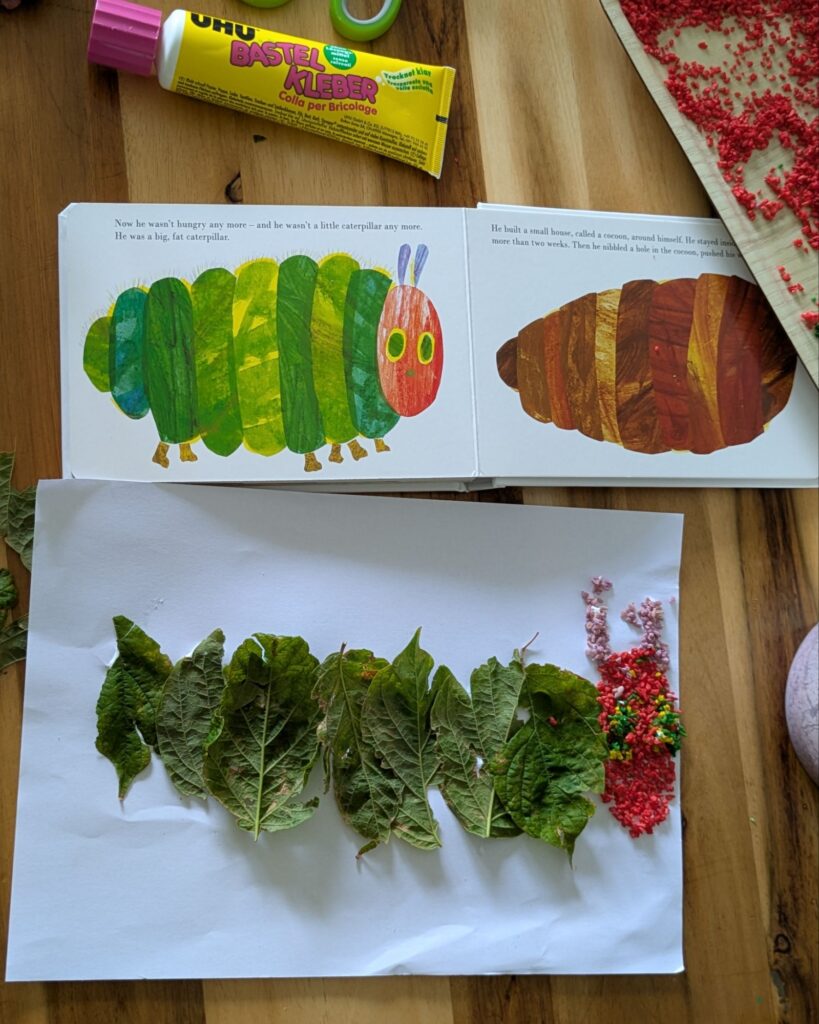
Supplies:
- Fresh green leaves
- Dyed red bulgur
- Glue
- White paper
How to Make It:
1. Place six leaves across the paper to form the caterpillar’s body, and glue them down side by side.
2. At the front, add a glue circle and sprinkle red dyed bulgur to make the caterpillar’s head. Then, use extra bits of bulgur to create the eyes, the antennae and the mouth.
Why It’s Great:
Using real leaves adds a nature-based twist to the craft, and no two caterpillars will look the same! Plus, preschoolers love collecting their own leaves outdoors, making it part scavenger hunt, part craft.
Craft 3: Butterfly Wings with Bulgur
“He was a beautiful butterfly!”


Supplies:
- Cardboard
- Tape
- Dyed bulgur in various colours
- Scissors or craft knife
How to Make It:
1. Draw a butterfly and carefully cut out just the wing sections.
2. Flip the cardboard over and tape the back so the openings become little “pockets.”
3. Then, let your child sprinkle different coloured bulgur into each wing segment, no glue needed, it just sticks to the tape.
Why It’s Great:
This one is magical and mess-free because there’s no glue involved. The bulgur stays neat in the taped pockets, and your preschooler gets full control over the colours and design.
But Isn’t This Wasteful?
You might be wondering, “Is using food like bulgur for crafts okay?” Here’s what I think:
It depends on what feels right for you. These were expired pantry items we weren’t going to eat, and using them gave them a second life. What you could use instead of bulgur or rice in case you’re feeling a kind of way about it is dyed sand or salt, or even expired rice. But, as always, do what feels right for your home and values.
Final Thoughts: Bringing Stories to Life Through Simple Crafts
When you pair a story like “The Very Hungry Caterpillar” with hands-on activities, your child remembers it not just with their ears, but with their eyes and hands too.
So next time you start a favourite book, ask your little one,“What part should we make together?” Then finish it off with a craft and you’ll be amazed at how well they remember parts of the book, especially newly learned words.
If you loved this post pin it and grab your own copy of The Very Hungry Caterpillar if you don’t already have it. It’s a favourite in our home. And, if you’d like more book and craft ideas like this, sign up for my weekly newsletter where I share printables, and stress-free craft ideas for not-so-crafty moms like us.
